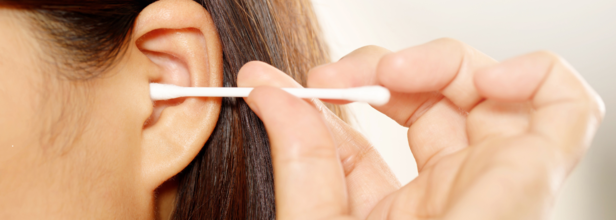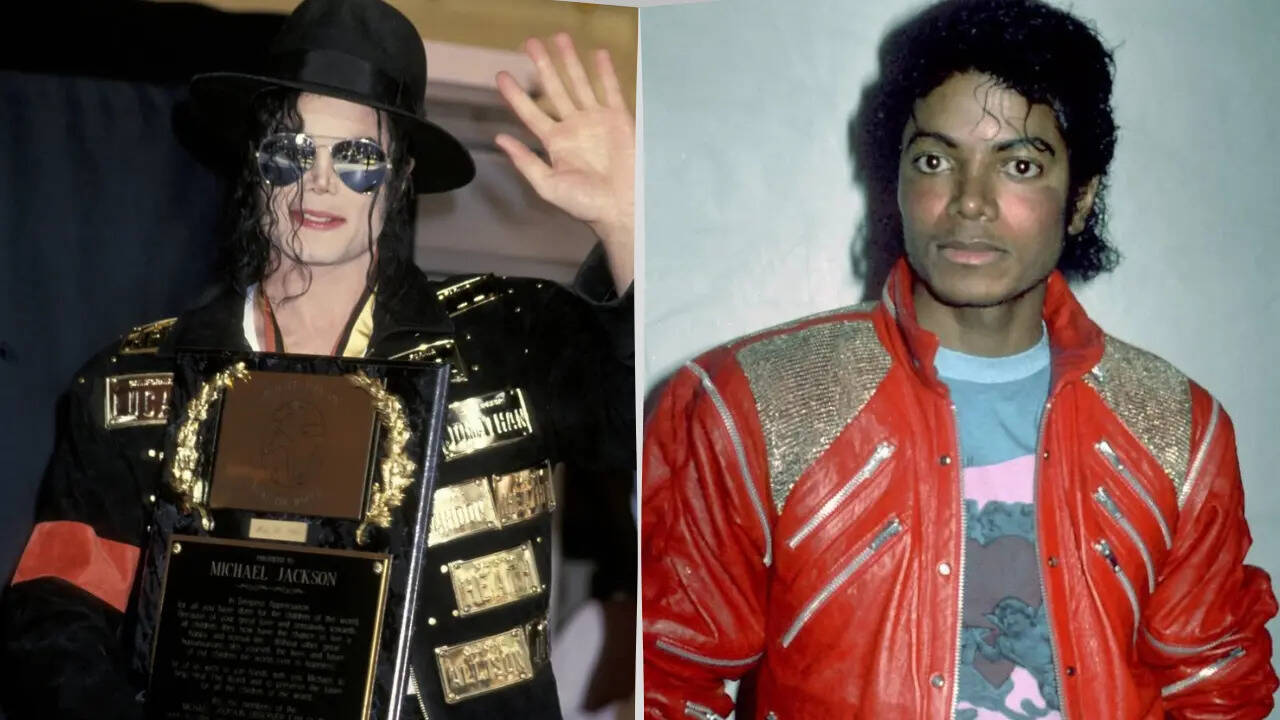- Health Conditions A-Z
- Health & Wellness
- Nutrition
- Fitness
- Health News
- Ayurveda
- Videos
- Medicine A-Z
- Parenting
- Web Stories
Nearly 30 People in England Get Rare Illness After Botox; How Safe Are Cosmetic Procedures, Really?

Credits: Canva
Select individuals in northeast England have reportedly developed a rare, life-threatening condition—iatrogenic botulism—after undergoing Botox cosmetic treatments. The cases, confirmed by the UK Health Security Agency (UKHSA), are provoking acute questioning of the safety of cosmetic treatments and regulation in the aesthetic business.
Botulism is a serious disease caused by botulinum toxin, a bacterium neurotoxin manufactured by the Clostridium botulinum bacterium. Botox, on the other hand, uses this toxin in highly diluted concentrations for cosmetic and therapeutic treatments, but overdosing or misadministrations lead to iatrogenic botulism. "Iatrogenic" literally means a complication caused by medical treatment, here improperly administered Botox.
In these newer incidents, patients suffered symptoms such as droopy eyelids, double vision, slurred speech, difficulty swallowing, and intense fatigue. As much as the UKHSA has seen no evidence that the Botox product itself was contaminated, the symptoms developed anywhere from a few days to four weeks after injection making early diagnosis especially difficult.
The authorities are also probing allegations of illicit Botox sales in the North-East of England. Botulinum toxin has been deemed a prescription-only drug by Dr. Alison Cave of the UK's Medicines and Healthcare products Regulatory Agency (MHRA). It was to be strictly controlled and delivered by authorized experts.
Experts point out that their enforcement division is currently identifying and prosecuting the people responsible for illegal Botox-like drug sales. Abuse of such highly toxic neurotoxins can have disastrous health implications and highlights the imperative need for tighter regulation and public education.
How Botox Works?
Botox temporarily paralyzes muscles to iron out wrinkles or cure medical disorders like migraines and excessive sweating. In cosmetic procedures, the toxin is applied in minute doses, precisely measured by trained experts. But when botulinum toxin is injected incorrectly or with too high a dose, it travels outside the area of injection, interfering with nerve impulses and producing systemic symptoms.
Though such cases are uncommon, their consequences are severe. The National Health Service (NHS) in the UK estimates that botulism is fatal in 5% to 10% of patients. If left untreated, the toxin can transfer to muscles of the respiratory system, leading to breathing problems and even fatalities.
10 other cases of iatrogenic botulism were reported in Massachusetts, USA, earlier this month, all of which were linked to a single spa that was giving cosmetic injections. This emphasizes that the problem is not limited to the UK. The youth-preserving procedures, most of which are done in non-medical environments, are causing more people to be at risk globally.
Consumers tend to downplay the risk, believing widely-accessible Botox procedures to be safe everywhere. Yet medical professionals are now advocating stricter patient education and practitioner certification to reduce such risks.
What Are the Signs of Botulism?
Botulism symptoms differ depending on how the toxin enters the body. In iatrogenic botulism, patients may not even notice the early signs to be of concern. But if left untreated, the condition can advance very quickly. Symptoms usually involve:
- Difficulty speaking or swallowing
- Weakness of the facial muscles and sagging eyelids
- Double or blurred vision
- Paralysis of the muscles and nausea
In foodborne illness, poor canning and storage are typically to blame. Infant botulism occurs when spores colonize a baby's intestines. Wound botulism, which has become more common in users of illicit drugs, happens when spores infect open wounds. But iatrogenic botulism results from medical errors—a sobering consideration for those who want cosmetic improvements.
Can You Recover From Botulism?
Early treatment is paramount. Antitoxins can prevent the disease from advancing but cannot undo damage that has already been incurred. Mechanical ventilation, as well as prolonged rehabilitation to regain muscle function and control, might be needed for patients. The silver lining? Most patients do recover if treated promptly with medicine.
UKHSA's Simon Howard assured the public that the practitioners who made the services mentioned in the reported cases are no longer providing the same services, and new reports of cases seem to be decreasing. There may still be additional cases emerging because the onset of symptoms is delayed.
Labiaplasty, Botox, and the Pressure to Look Perfect
This trend also contributes to wider ethical concerns surrounding the beauty industry. Treatments such as labiaplasty, breast enlargement, and Botox are becoming more heavily sold to teenagers and young adults on social media platforms, usually with no clear explanation of the risks involved. As aesthetic treatments become more socially accepted, the distinction between medical treatment and cosmetic modification erodes.
While autonomy over one's own body and expression of self are essential, they need to be based on accurate, science-driven health education. The risks, as shown in these cases, are too great.
This cluster of iatrogenic botulism infections is more than an anomaly. It's an alarm call. Patients need to ask the right questions, check and confirm practitioner credentials, and register suspicious activity with regulatory bodies.
Cosmetic procedures may promise quick beauty fixes, but they come with very real risks. In a world increasingly obsessed with aesthetic perfection, safety and health literacy must come first.
Never Remove Ear Wax At Home, Say Audiologists, Know Why

Credits: Canva
Hearing loss isn't just an inconvenience—it can lead to serious social and emotional consequences. With devices blasting music directly into our ears and constant exposure to urban noise, protecting your hearing is more important than ever. Here's how to keep your ears healthy throughout your life.
Hearing Loss Isn’t Just for the Elderly
Many people think hearing problems come with old age. But the truth is, hearing health should be a lifelong priority. Early awareness and care can reduce long-term damage and stigma. Communication is key to our personal and professional lives, and struggling to hear can lead to frustration, embarrassment, and isolation.
Age and Its Effects on Hearing
While anyone can experience hearing issues, age is a major factor. Over 40% of people over 50 and more than 70% over 70 deal with some degree of hearing loss. Often, it creeps up slowly—people assume others are mumbling or blame background noise. It’s usually loved ones who first notice the issue, pointing out the loud television or constant requests to repeat themselves.
Noise Exposure Is a Growing Concern
In earlier decades, occupational noise was the biggest hearing threat. Today, it’s recreational noise—especially headphones and personal devices. Audio technology has improved so much that users can raise the volume dangerously high without noticing distortion. This makes it easier to cause long-term harm to hearing.
Protect Your Ears in Loud Environments
Noise above 85 decibels—think concerts, clubs, or power tools—can damage your ears quickly. Earplugs are a simple and effective solution. Special musician-grade options preserve sound quality while reducing volume. Custom earplugs are also available for frequent concertgoers or those in loud work environments.
Use Headphones Wisely
Personal audio devices should be used with caution. Experts recommend the 50/50 or 60/60 rule: keep volume at 50–60% and limit use to 50–60 minutes at a stretch. Noisy surroundings can tempt you to increase volume—resist the urge. Instead, consider noise-cancelling headphones or moving to a quieter area.
Get Your Hearing Tested
Many people live with undiagnosed hearing loss for years. Fortunately, testing is easier than ever. Quick online hearing checks are available through trusted health organizations. If any issues are detected, follow up with a professional for a detailed evaluation.
Don’t Ignore Sudden Changes
If you wake up with severe hearing loss in one ear, or experience repeated infections, seek medical attention promptly. Inflammation in the inner ear can cause lasting damage if left untreated. Sometimes, steroids can help if administered quickly.
Respect the Role of Earwax
Earwax is often misunderstood. Far from being a sign of poor hygiene, it protects and moisturizes the ear canal. Avoid using cotton buds, which can cause irritation or push wax deeper. Let wax exit naturally or have it removed professionally if needed.
When to Consider Hearing Aids
Modern hearing aids are discreet, effective, and available through public health services in many areas. They help people stay socially connected, which is essential for mental health and healthy aging.
World Vitiligo Day- Do You Know Michael Jackson Had Vitiligo And His Death Played A Crucial Role In Spreading Awareness About The Condition?

(Credit - Michealjackson/Instragram)
Observed as World Vitiligo Day, 25th June is a day we celebrate and spread awareness about the vitiligo community. Started in 2011, this day was highlighted to support people who have this condition and spread awareness about it. According to Yale medicine, vitiligo is a disease that causes patches of skin to lose color, causing white spots. There is a lot of stigma around the condition and Yale Medicine experts have shared how vitiligo patients are often treated as ‘untouchables’, due to general lack of awareness.
An interesting fact about this skin condition is that many people started learning about it and understanding the nuances of the disease due to the public figures who opened up about it. Most notably, Micheal Jackson, who was under extreme scrutiny and suspicion for the change in his skin color. It wasn’t until his body autopsy report that people finally understood he had vitiligo and the extent of its impact.
The Micheal Jackson Effect
For years, people wondered why Michael Jackson's skin seemed to get lighter. He later confirmed that he had a skin condition called vitiligo. According to Vitiligo Clinic & Research Center, he publicly talked about it for the first time in a 1993 interview with Oprah Winfrey. He explained that his skin started changing around 1982, when he was about 24, and by the time of the interview, it had been progressing for about 10 years.
Vitiligo can indeed cause someone to lose most or all of their skin color, making them appear very white. However, this is rare and usually takes many years, with spots appearing gradually. So, it's unlikely that vitiligo alone caused his entire skin to turn so dramatically white.

Did Micheal Jackson Have Vitiligo?
There is a specific treatment for vitiligo that can remove any remaining dark pigment from the skin if a person has the condition. This treatment is a skin cream called monobenzone (also known as Benoquin). It's the only FDA-approved medication for this purpose for vitiligo. This cream doesn't typically work on people without vitiligo. It's a real vitiligo treatment for those who prefer to have an even, very light skin tone rather than a spotted appearance.
After his death, his autopsy report confirmed "patches of light and dark pigmented areas" on his skin, and vitiligo was noted in his medical records. Additionally, a tube of Benoquin cream was found among his medications, confirming he used this FDA-approved vitiligo treatment.
How Aware Are People About Vitiligo?
While Micheal Jackson may be the most known for this disease, there are other people who have this condition, like model and public figure Winnie Harlow. In a 2019 medical article published in the Journal of Clinical and Aesthetic Dermatology, the authors explained how awareness about diseases increases when a public figure goes through one. The authors explain the Micheal Jackson & Winnie Harlow Effect.
They conducted their research using Google Trends to see how often people searched for "vitiligo," "Michael Jackson," and "Winnie Harlow" all over the world from January 2004 to December 2018. Google Trends shows how popular certain search terms are over time and in different places.
The highest number of searches for vitiligo happened between June 28, 2009, and July 4, 2009, right after Michael Jackson passed away on June 25, 2009. This was the biggest surge in vitiligo searches in 14 years. His autopsy later confirmed he had vitiligo.
While his death caused a huge spike in vitiligo searches, it was hard to see a strong connection between him and vitiligo searches before or immediately after his death when compared directly. However, the overall impact of his passing on vitiligo searches was still very noticeable, especially when compared to other skin conditions during that time.

Celebrity Impact on Disease Awareness
The study explained that both Michael Jackson and Winnie Harlow are very well-known people who have had vitiligo. However, Michael Jackson mainly affected vitiligo searches after his death. After that peak, searches went back to normal levels. In contrast, Winnie Harlow is famous because of her vitiligo. She openly shows her skin patches, appears in public, and uses social media to encourage and support others with the condition. Vitiligo searches increase whenever she is in the news
Understanding Vitiligo – Can It Be Passed Down Genetically?
The Mayo Clinic explains that family history could play a part in vitiligo. If someone in your family has had vitiligo, it increases your chances of developing it significantly. Other factors include having an immune disorder, or going through a trigger event such as stress, severe burn or skin trauma, such as coming in contact with a certain chemical.
A 2018 Dermatology Clinic study concluded that it is an autoimmune disease in which the immune system mistakenly attacks healthy cells—in this case, melanocytes. There is a complex relationship between how the immune system is programmed, how melanocytes are targeted, and how the immune response becomes unregulated.
Common Myths About Vitiligo
Many medical professionals and researchers have been actively debunking common myths about the disease and helping people learn more about the skin condition. In a 2022 study published in the Journal of Clinical and Aesthetic Dermatology, the authors debunk common myths about the disease.
Myth 1: Vitiligo is More Common in People with Darker Skin
It's a common belief that vitiligo affects people with darker skin more often. However, this isn't true. While the white patches of vitiligo are much more noticeable on darker skin, the condition affects people of all skin tones at similar rates.
Myth 2: Vitiligo Only Affects Adults
Many people think vitiligo is mainly an adult condition, but that's incorrect. Nearly half of all people who get vitiligo develop it before they turn 20 years old.
Myth 3: Mental Health Issues Are the Same for Vitiligo Patients and Others
This is a big myth. People with vitiligo are much more likely to experience anxiety and depression compared to those without the condition. For example, one study found that 62% of vitiligo patients suffered from depression or anxiety, compared to only 25% of healthy individuals.
Myth 4: Only People with Darker Skin Feel the Emotional Toll of Vitiligo
The emotional and social challenges of living with vitiligo affect everyone, no matter their skin color. While the overall emotional burden is similar across all patients, there can be some differences in what concerns them most.
Myth 5: All Body Areas Repigment at the Same Speed
Different parts of the body can regain color at different rates. Two main factors influence how quickly a vitiligo patch repigments. Areas that get more sun exposure tend to repigment faster. Areas with more hair follicles tend to repigment more quickly because hair follicles contain pigment-producing stem cells.
Heart Attack Symptom: This Unusual Pain That Travels From Chest To Arms, Especially In Women, Should Be Checked Out Immediately!

(Credit-Canva)
Heart attacks are more common than people realize, according to the Heart Organization, every 40 seconds in United States someone has an attack. This happens when the blood flow is restricted or completely cut off, unable to reach the heart muscle. This happens when there is a buildup of fat or cholesterol blocking the arteries. Even though it is the number one cause of death in women, they often chalk it up to acid reflux, the flu, or just symptoms of normal aging.
However, mistakes like this are not uncommon and sometimes, these misleading symptoms can significantly delay treatment. The National Health Service (NHS) notes that this serious condition can show up in various ways, including chest pain, dizziness, sweating, and breathlessness.
Dr. Chris Kelly, Chair of Cardiology at UNC Rex Hospital, highlighted three key indicators that require immediate medical attention at an emergency room. He specifically pointed out that one of these signs is less common and often mistaken for other illnesses.
A Primary Warning
Dr. Kelly says the most common sign of a heart attack is chest pain. People might describe it as pressure, tightness, fullness, or just an ache in the chest. If you feel any chest discomfort that doesn't get better after a few minutes, especially if it spreads to your shoulders, arms, or jaw, it's a very serious sign. If this happens, you need to get to an emergency room right away.
Sudden Shortness of Breath
Another important sign Dr. Kelly mentioned is a sudden feeling of being short of breath. He explained that if you're not doing anything active but feel like you've just run a long distance, it could mean your heart is struggling. This can cause fluid to build up in your lungs. If you suddenly feel this way, go straight to an emergency room to get checked out.
Unexpected Abdominal Pain and Nausea
A less common, but still serious, sign of a heart attack can be sudden belly pain along with nausea. Many things can cause these symptoms. However, Dr. Kelly advises being extra careful if you are over 50, have risks for heart disease, and suddenly feel belly pain and nausea, especially if you also just "don't feel right." This particular symptom is more common in women. If you experience this and it doesn't get better in a few minutes, head to the emergency room immediately.
Importance of Prompt Treatment
Dr. Kelly stressed that getting medical help as soon as possible is crucial for your heart. As heart doctors often say, "time is muscle." This means the faster you get to the emergency room, the better the chance your heart has to recover and work properly in the long run. He emphasized that it's always "better to be safe than sorry" and to seek help quickly.
The NHS also mentions that while chest pain is the most common heart attack symptom (and can sometimes feel like indigestion), other symptoms can happen without chest pain. These include shortness of breath, feeling or being sick, and pain in the back or jaw. If you think someone is having a heart attack, it's vital to call emergency services immediately, as quick action greatly improves their chances.
© 2024 Bennett, Coleman & Company Limited

